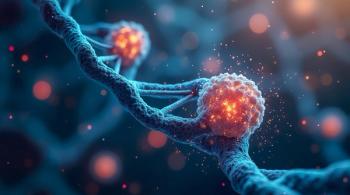
Improvements Needed Across Growth Hormone Treatment Continuum
A new study from Turkey shows, among other results, that delayed initiation of treatment with growth hormone among pediatric patients may lead to minimal height improvements despite adherence to the therapy.
Over the 10 years of a study that took place from 2009 to 2018 in Turkey, investigators found that improvements following
The investigators’ findings
“We aimed to determine the follow-up, treatment results, and final heights of patients with rare diseases who had been treated with GH treatment in the last 10 years,” the authors wrote, “and to determine the differences in the process and results over the years.”
IGHD (n = 689) saw the most treatment initiations with GH (89.8%), followed by TS (n = 28) in a very distant second (3.7%), SGA (n = 26; 3.4%), and MPHD (n = 24; 3.1%). All patients had been administered a GH stimulation test, with growth rate and height, respectively, evaluated by results that fell below the 25th percentile and 2.5, 2, or 1.5 standard deviation scores (SDS). A reference specifically developed for Turkish children was used to calculate their measurements, and at each study visit, data on compliance, GH product, type of injection device, dosage, GH storage conditions, number of and reasons for missed injections, person administering daily GH injections, and follow-up issues were captured.
Target height was considered reached if participants’ final height for the study period was within 5 cm above or below that goal. In addition, bone age had to lag chronological age by at least 2 years in the prepubertal period, the authors wrote.
At the start of GH therapy, the youngest patients to initiate the regimen were in the SGA group (median, 8.4 [range, 3.0-14.4] years) and the oldest were in the IGHD Group (median, 12.0 [range, 0.83-17.3] years); overall, the age was 12.0 years. Bone age, however, was youngest in the MPHD group (median, 5.0 [range, 0.5-13.5] years), which also had the greatest variation in height SDS, at –3.8 (range, –7.8 to –1.0). The smallest height SDS variation was seen among those with IGHD, at –2.9 (range, –8.5 to –1.7). The MPHD, IGHD, and TS groups had the lowest peak responses to GH treatment, and the MPHD group had the lowest serum IGF-1 and IGFBP3 serum values.
Pituitary MRI was pathological in an overall 27.1% of the patient cohort, with pituitary hypoplasia being the most common pathology in 60.0%. By group, 78.3% of the MPHD group and 25.9% of the IGHD group had various pathologies (eg, pituitary hypoplasia, ectopic neurohypophysis, microadenoma/suspected microadenoma, empty sella, partial empty sella, Rathke cleft cyst, and arachnoid cyst). None were found to interfere with the GH treatment, however, the median of which was 0.2 (range, 0.2-0.4) mg/kg/week.
The investigators’ analysis also found the following:
- Longest median treatment duration: 3.8 (range, 0.3-9.0) years, MPHD group
- Shortest median treatment duration: 2.0 (range, 0.3-1.08) years, IGHD group
- Patients’ GHD dose changed just 7.0% and was dubbed a minimal change, despite doses adjusted according to changes in weight, IGF-1 elevation, and glucose metabolism
- Growth velocity in year 1 was highest in the MPHD group and lowest in the SGA group: 9.8 vs 7.1 cm/year
- No significant differences in height SDS were seen in the TS (P = .225) and SGA groups (P = .191)
- The IGHD and MPHD groups saw significantly higher SDS (both P < .001)
- The TS group had the most participants reach final height (39.2%) and the SGA group had the fewest (15.4%)
- Target height SDS-final height SDS was highest in the TS group (2.4 [range, 0.4-3.4])
- GH treatment start time height SDS, first-year growth velocity, puberty status were shown to predict final height SDS
- 92% of patients adhered to treatment
Because being an older age at initiation of GH treatment has been linked to a lessened overall response, the authors believe their findings echo previous research that stresses the importance of early diagnosis and treatment. Principally because their cohort had a late median age of treatment start.
In addition, they note that their results indicate that for predicted final height in children treated with GH, height SDS at treatment initiation, target height SDS, and first-year treatment response should be major parameters incorporated into that calculation.
“The results of this study suggest that clinical awareness of causes of short stature should be improved, diagnosis in patients with pathological short stature should be more rapid, the period between first presentation at pediatric endocrinology and initiation of GH therapy should be shortened, and that in all children who would benefit from GH therapy, treatment should be started at earlier ages,” they concluded.
Reference
Aycan Z, Yilmaz AA, Yel S, Savaş-Erdeve S, Çetinkayal S. Evaluation of growth hormone results in different diagnosis and trend over 10 year of follow-up: a single center experience. J Clin Res Pediatr Endocrinol. 2021;13(3):332-341. doi:10.4274/jcrpe.galenos.2021.2020.0238
Newsletter
Stay ahead of policy, cost, and value—subscribe to AJMC for expert insights at the intersection of clinical care and health economics.














































